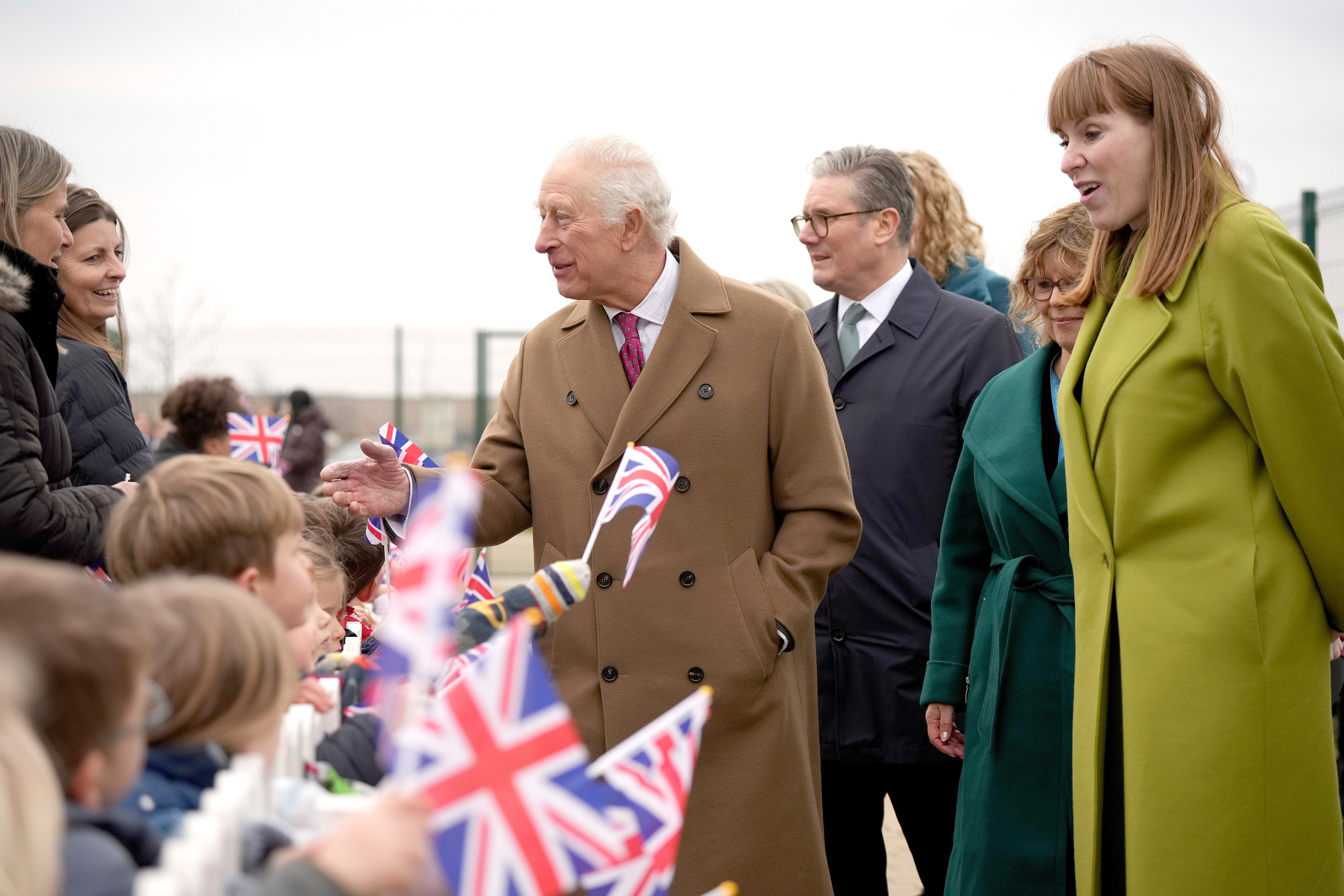What is the thinking behind the King’s new housing development?
Sean O’Grady explores the monarch’s longstanding fascination with architecture, as well as the political implications of the newly completed project


Given some of the negative coverage and commentary on social media about the visit of the King, accompanied by Keir Starmer and Angela Rayner, to the newly completed village of Nansledan in Cornwall, you’d think that Charles III had just joined the Labour Party – a truly historic moment – and was on his way to his first meeting of the local branch of Unison (the primary union for public-sector people such as his majestic self).
The context to the admittedly unusual photocall has been somewhat neglected. In short, it might have been better if the palace and No 10 had headlined their publicity: “Major South West Landlord and Builder shows Prime Minister around his Latest Development”. No one would have cared – which is maybe the point...
What is Nansledan?
It’s an “extension”, ie a model suburb, of Newquay. The 218-hectare site hosts a mixed development on former fields of some 4,000 homes, a primary school, an orchard, and various business premises – which will, it’s said, create about 4,000 jobs.
Work began on the land in 2013, when the King was still Prince of Wales and Duke of Cornwall, which meant he was responsible for the Duchy of Cornwall estate, consisting of 43,000 hectares of land and a formidable investment portfolio. The Duchy dates back to 1337, when it was established by Edward III. It is private but its activities are governed by statute. Nansledan is a commercial development, and requires no public subsidy.
The suburb – like the Poundbury model town in Dorset, built by Charles before it – embodies all the prince’s ideas about the built environment: sustainability, “human” scale, harmony, beauty, the local vernacular, and the welfare of the inhabitants.
He started to take a critical interest in architecture in the 1980s, summed up in his book A Vision of Britain (1989). As Prince of Wales he was outspoken about the “monstrous” way that architects were sticking “carbuncles” onto much-loved buildings (his famous description of the proposed extension to the National Gallery in 1984), and the inhuman habits of modern town planners. In return, they regarded his ideas as sentimental pastiches, and Poundbury as a toy town.
Why invite Starmer and Rayner?
Because he wants, actually rather subtly, to send a public message to them – and to the political classes in general – to bear in mind certain desirable principles as they press on with building 1.5 million new homes and relaxing planning rules for residential, regeneration and infrastructure projects across the kingdom.
Charles is saying to them, without needing to make any “controversial” or “interfering” speech: “Please don’t build more of those ghastly ‘spreadsheet’ commercial buildings, and try not to make everything everywhere look like it came out of a box of Lego.” You can’t help but wonder how delighted he would be if the deputy prime minister could find a way quietly to restore the Office for Place, and incorporate the consideration of “beauty” into her housing drive.
So who’s using who there, then?
Doesn’t it break the convention about political neutrality?
Not if (as the palace confirms it was) the unspecified invitation to the “prime minister” and the “housing secretary” of the day was issued before the election, irrespective of party. Thus, had the Conservatives been returned to office last July, then (presumably) it would have been Rishi Sunak, and whoever replaced Michael Gove as housing secretary, laughing and joking on a jolly day out in Cornwall. At some point in the future it might be Kemi Badenoch, or Nigel Farage, looking around a new estate.
However, the King’s evident, almost childlike, joy at seeing the living reality of Nansledan did look rather like he was out on a dizzy date with “Ange” Rayner, surely the most vivacious member of the cabinet. All too predictably, that’s been enough to trigger a certain section of the monarchist community.
Is the King a Marxist?
We don’t know his private views, as is only right, but probably not.



Join our commenting forum
Join thought-provoking conversations, follow other Independent readers and see their replies
Comments